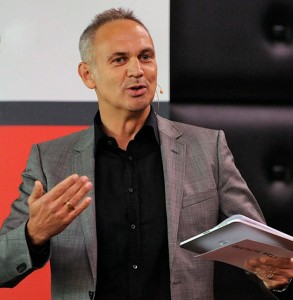Search Results for Tag: user-generated content
Where does the rabbit hole of user generated content lead?
Head of Innovation Projects at DW
Couch potatoes aren’t inactive anymore. The days of uninterrupted attention are long gone, replaced by multi-device interaction on a massive scale. On average, 61 percent of TV viewers worldwide scan more than one glowing rectangle at a time. For news broadcasters to fully realize the potential of using the second screen, it is important to maintain a high-standard of conversation and discourse as a complement to informational content rather than simply providing an expansion on entertainment.
The advantages of using the second screen to both expand the audience base while providing them with a richer user experience will best be realized if the conversation takes place in an information-rich and well-organized environment.
Building and maintaining high-standard second screen platforms is a new part of the journalistic responsibility for accuracy and verification as the public forum has moved away from editorial pages and onto social networks. In contrast to the anarchy of the comments section, developing the conscientious use of the second screen as a public forum and promoting an intelligent exchange is an important value of public service media.
So what is next for the second screen? The EU co-funded project SAM (Socialising Around Media) is developing a Social Media delivery platform based on second screen and content syndication. It delivers content to the user rather than the user having to “pull” relevant material from digital sources and social networks. Since there are currently no standards for users, SAM aims to develop a standardized way to discover and syndicate media content interactively while providing users with content that is directed at their interests without them having to search for it manually. One part of this is creating dynamic social “hangouts” where people share interests, socialize and build virtual communities.
But the second screen is more than just a one way street and it has long been a way to access users’ thoughts, opinions and approval. It is also a place to mine for content and create real-time user experiences based on what is happening on television and on the streets. But broadcaster beware: How can we ensure that everything that is contributed is real and not some type of catfish scheme?
Here is where verification comes in. The REVEAL project focuses on verification technologies, tools and strategies in order to help journalists identify trustworthy user generated content on social networks. This includes assessing aspects such as the credibility of contributors, their reputation and influence, the quality of content items, establishing the right context and much more.
For journalists and broadcasters alike, mastering the flow of content through online networks is a primary focus of development and innovation. DW’s Innovation team is contributing to projects like SAM and Reveal to make sure the future of digital media looks as bright as we think it should.
New DW special for Rio+20
UN Secretary-General Ban Ki-moon called Rio+20 one of the most important global sustainability meetings of our time. How can society be structured so future generations inherit a planet they can live on?
Today, DW launched its new online special covering Rio+20: Today’s voices with tomorrow’s ideas. This DW special looks at the questions – and answers – of sustainability in the economy, society and technology.
We are also looking for different opinions on the subject from around the world. Send your thoughts to mydw@dw.de. We’re especially looking for photo or video submissions, but articles are always welcome, too. We’re going to compile all of the submissions and publish them on dw.de.






Feedback